Flehmen response in horses: Is it an odour or is it the stomach?
2 min. read time
Audio version – listen to this article easily
The symptoms vary from horse to horse: Just as varied are the signs - or symptoms - of a stomach ulcer from horse to horse. There is therefore no uniform symptom picture that applies universally to every stomach patient.
Only by means of a gastroscopy can stomach ulcers be clearly diagnosed: In most cases, the symptoms are gradual, which is why in many cases they initially remain undetected. This is why peptic ulcers are often only detected at a late stage.
The sooner the symptoms are recognized, the sooner action can be taken: In order for this to work, we provide you with a list of the most common symptoms below.
For your convenience we have allocated symptoms into categories. Simply click on the symptom you want to learn more about.
Horses suffering from stomach problems generally will have less appetite.
This often comes on gradually, for example when a horse doesn’t dive right into its feed like it usually does, starts to push its feed around with its nose or leaves part of the feed uneaten.
It also may not be eating all of its roughage.
People who’ve had stomach ulcers know these symptoms: when the stomach goes on strike, one doesn’t feel like eating.
The stomach contracts during digestion, and this causes pain, especially in areas where the stomach lining is damaged.
When gastric acid comes in contact with an inflamed area, this leads to an unpleasant burning sensation.
.jpeg?width=4288&name=AdobeStock_105470563%20(2).jpeg)
Known as a sign of submissiveness, idle chewing may also indicate stomach problems.
The horse moves its mouth or chews without food.
Unlike idle chewing as sign of submissiveness, the horse will grind its lower jaw as if it is chewing on food.
This involves more than just a few chewing movements.
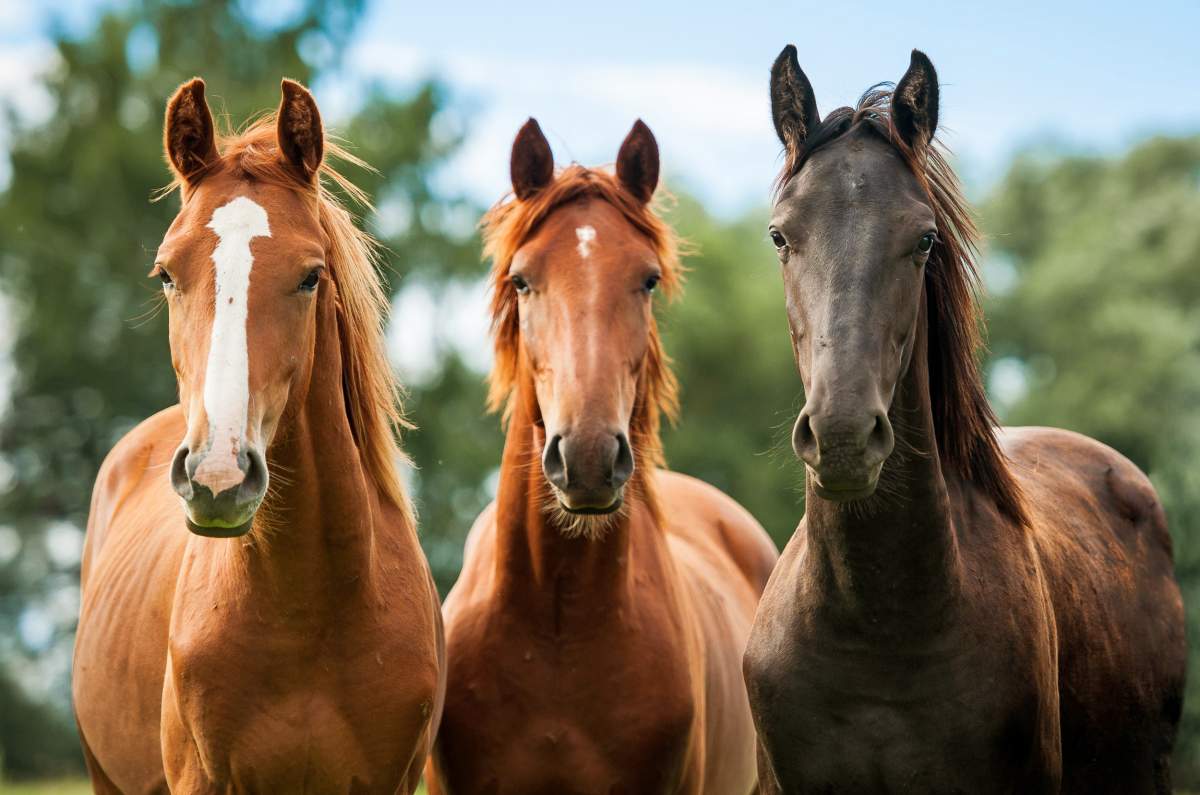
Tail swishing during feed consumption is very atypical for healthy horses and a clear sign of gastric ulcers.
Tail swishing is a sign of pain and discomfort.
The horse experiences pain through the consumption of food and its subsequent digestion and responds by swishing its tail.
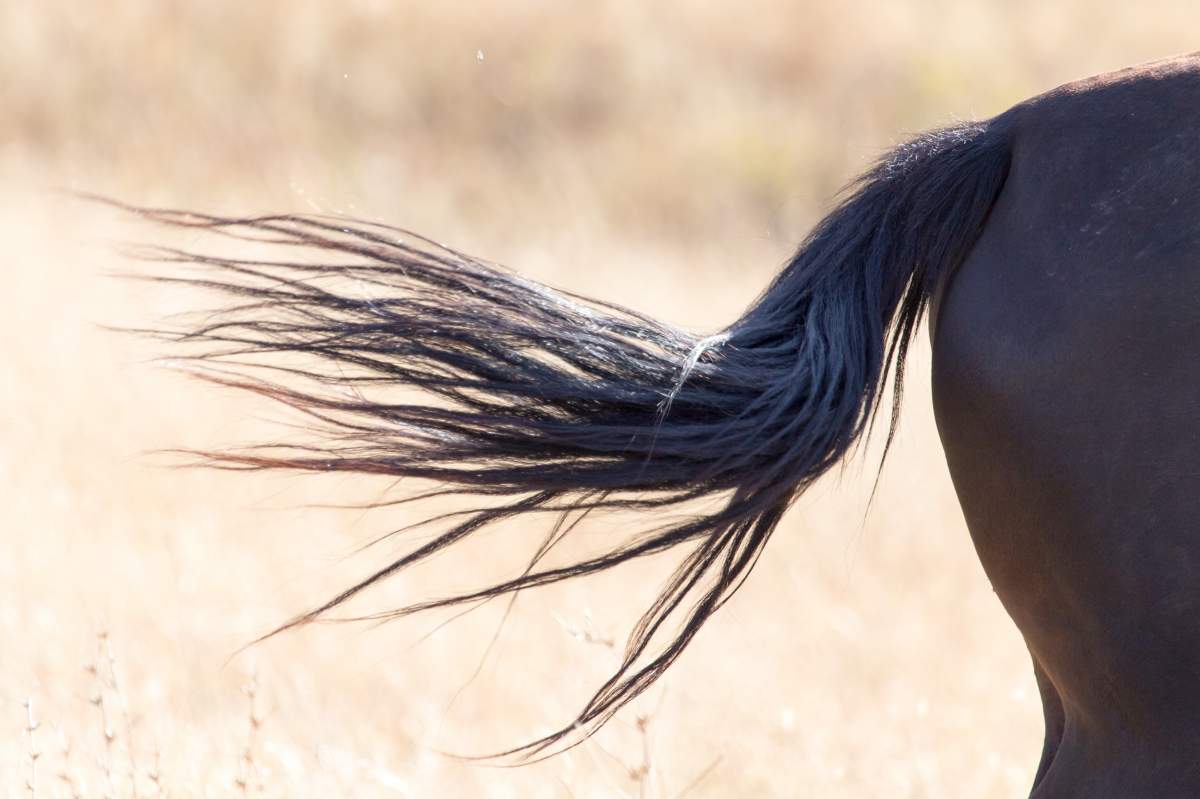
One cannot say that all horses with stomach ulcers will drink more water, or less of it.
This can vary greatly.
It may be that the horse consumes substantially more, but also substantially less water.
Because horses drink when they want, this problem is often overlooked or can be difficult to control.
A 600 kg horse will drink about 30-60 litres per day depending on work performance, weather and keeping.

When a horse lies down, the stomach is contracted by the movement, and this can mean pain for the horse.
The horse may appear to be thinking about how it wants to lie down, hesitating, possibly needing several attempts and then perhaps preferring to stand.
One may also often observe that once the horse lies down, it stays down.
Horses with stomach problems lie down often and consequently spend less time eating, which only worsens the problem further: the stomach continues to produce acid, which in turn can attack the unprotected stomach walls without a buffer through the saliva for lack of feed – which brings us directly to the other extreme.
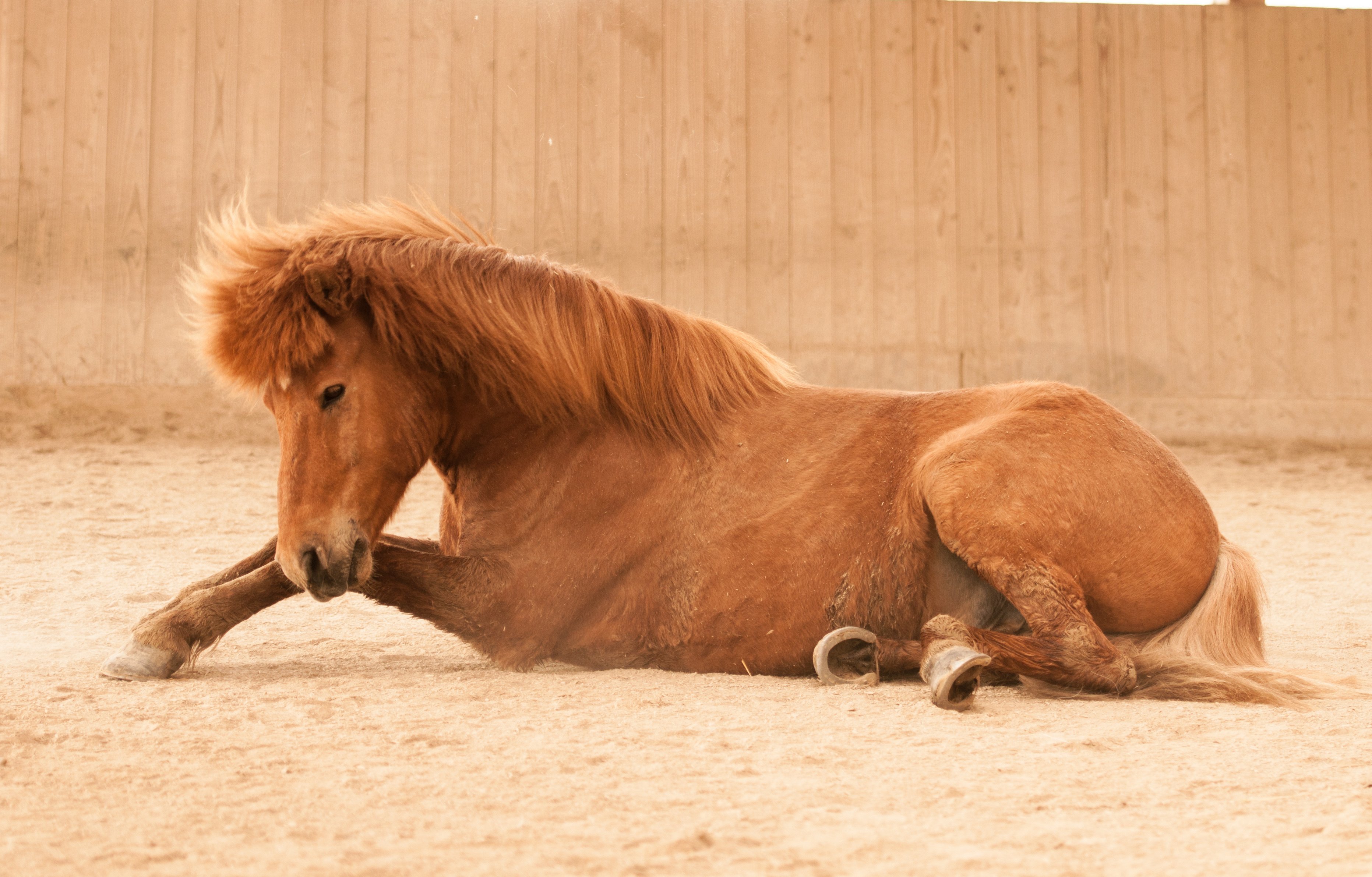
Stomach pain may trigger a defensive behaviour when the girth is tightened or even when the saddle is placed on the horse’s back.
The girth covers the area near the horse's stomach.
When the girth is tightened, the horse’s belly is pulled up and consequently the stomach as well.
This causes the gastric acid to enter the sensitive part of the stomach and can thus attack the damaged gastric mucosa,
which can be extremely painful for the horse.
The horse may respond by kicking in the direction of the girth or the human applying it, beating its tail or even by trying to bite the human.
This is very typical for horses with gastric ulcers.
.jpeg?width=3888&name=AdobeStock_291462786%20(1).jpeg)
Horses suffering from stomach ulcers often have changed personalities.
The most tolerant horse can suddenly seem to transform into an aggressive troublemaker who upsets the whole herd, and the most sociable buddy may become a loner who prefers to stand by himself in the paddock away from the others.
Points 10 and 11 clearly show that such behavioural changes can have a wide range from introversion to aggression.
Here is where you come into play as the animal’s owner and caregiver: solid knowledge of your horse’s personality and individual characteristics is extremely important in the ability to judge correctly whether you are dealing with a problem, a bad mood or something else.
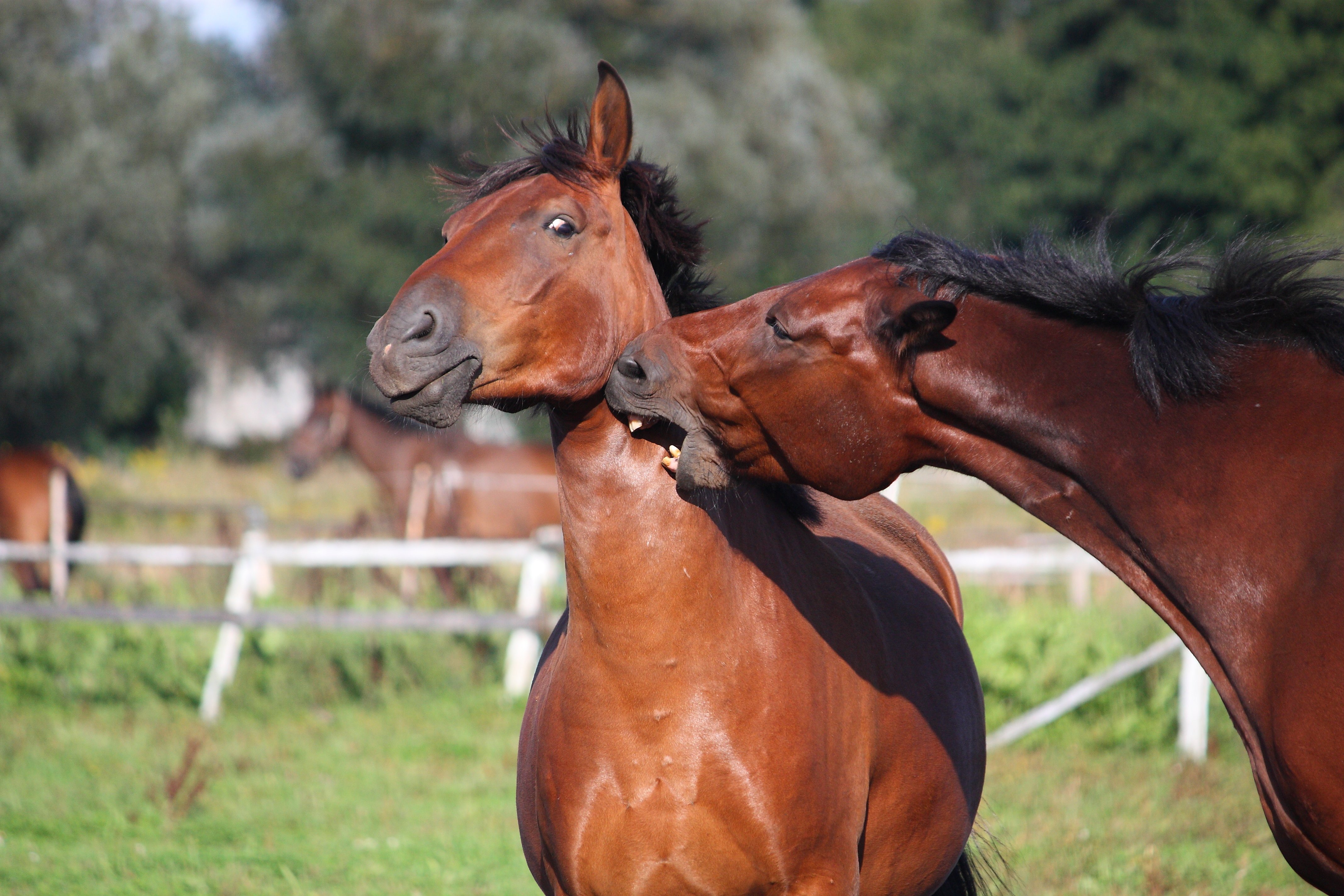
Often it is unclear which is first - the gastric ulcer or the cribbing behaviour, because both can be either cause or symptom.
However, it is often observed that horses with a tendency to cribbing will do so more often as a result of a gastric ulcer.
In this way the horse tries to stimulate salivary flow in order to alleviate stomach pain.
There are also horses which begin cribbing only when they develop stomach ulcers.
Cribbing normally involves the horse placing its incisors on an object and swallowing air.
The contraction of the lower neck muscles opens the pharynx and results in the typical cribbing sound.
Rarely, horses will exhibit cribbing when they are free.
These don't place their incisors on an object but hold their heads freely.
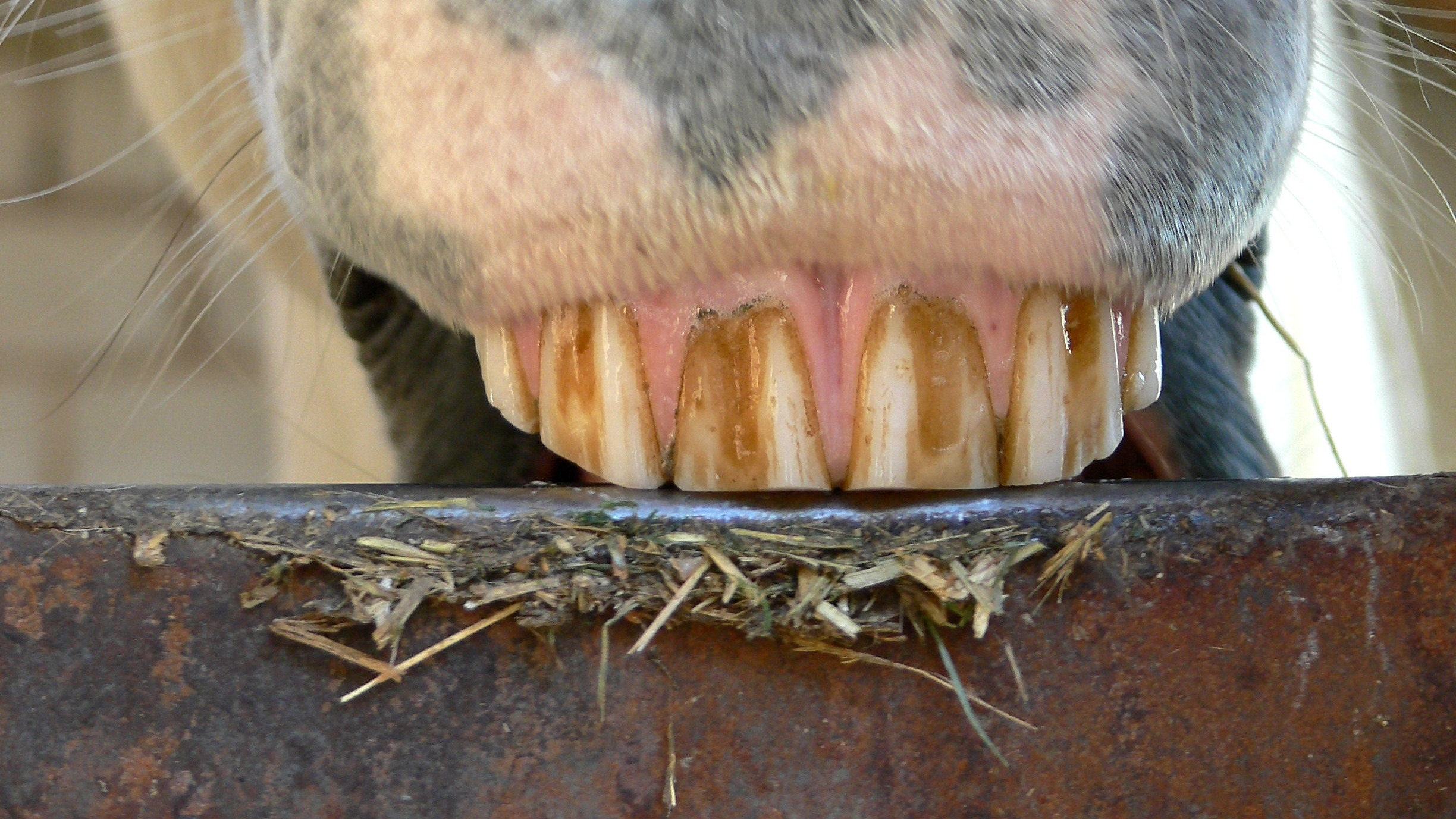
Flehmen behaviour is when the horse extends its head forward and curls its upper lip.
In most cases, horses show this behaviour when they notice a smell and want to identify it more closely.
But horses also exhibit flehmen behaviour as a sign of pain and discomfort, as demonstrated by many horses that have ulcers or colic.
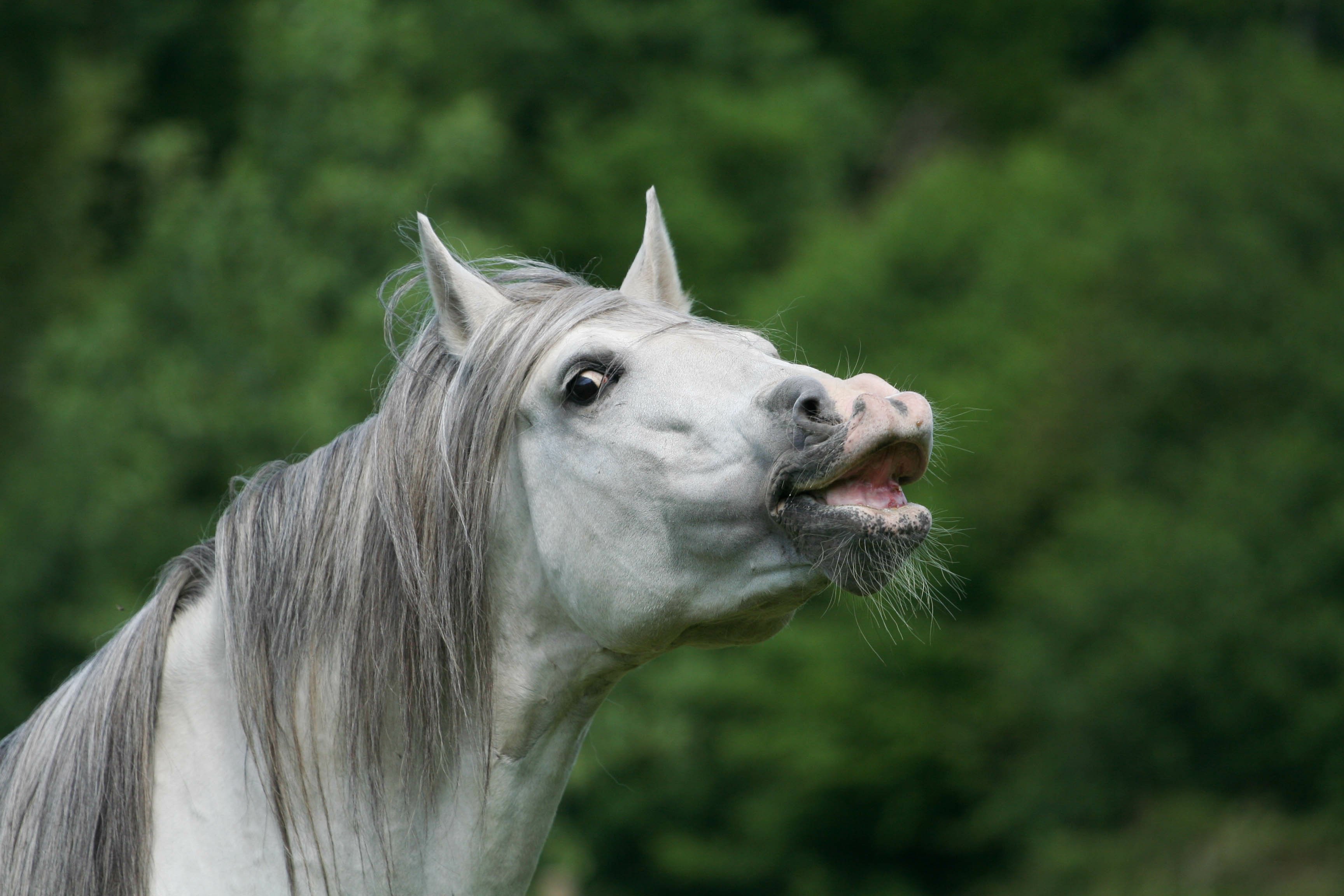
Whether in the stable, at pasture, during grooming or whilst being ridden – if a horse is constantly yawning, this is a relatively clear indication for diseases of the gastrointestinal tract.
At the same time, yawning also helps to reduce stress.
And if there’s anything that an ulcer patient has plenty of, it’s stress – as a cause of the stomach ulcer and/or resulting from the pain.
Some horses also continue yawning from time to time even after their gastric ulcers undergo successful treatment.
Naturally stress in this context is a cause, not a symptom, but with stomach ulcers it can hang over our horses’ heads like a Sword of Damocles.
We therefore recommend that you read the corresponding article about equine stress and how to keep this to a minimum.
After all, observation of your animal is an important aspect in recognising stomach ulcers – and false alarms should be avoided, as veterinary examinations are rarely remembered as cherished holiday experiences.
And that puts stress on us.
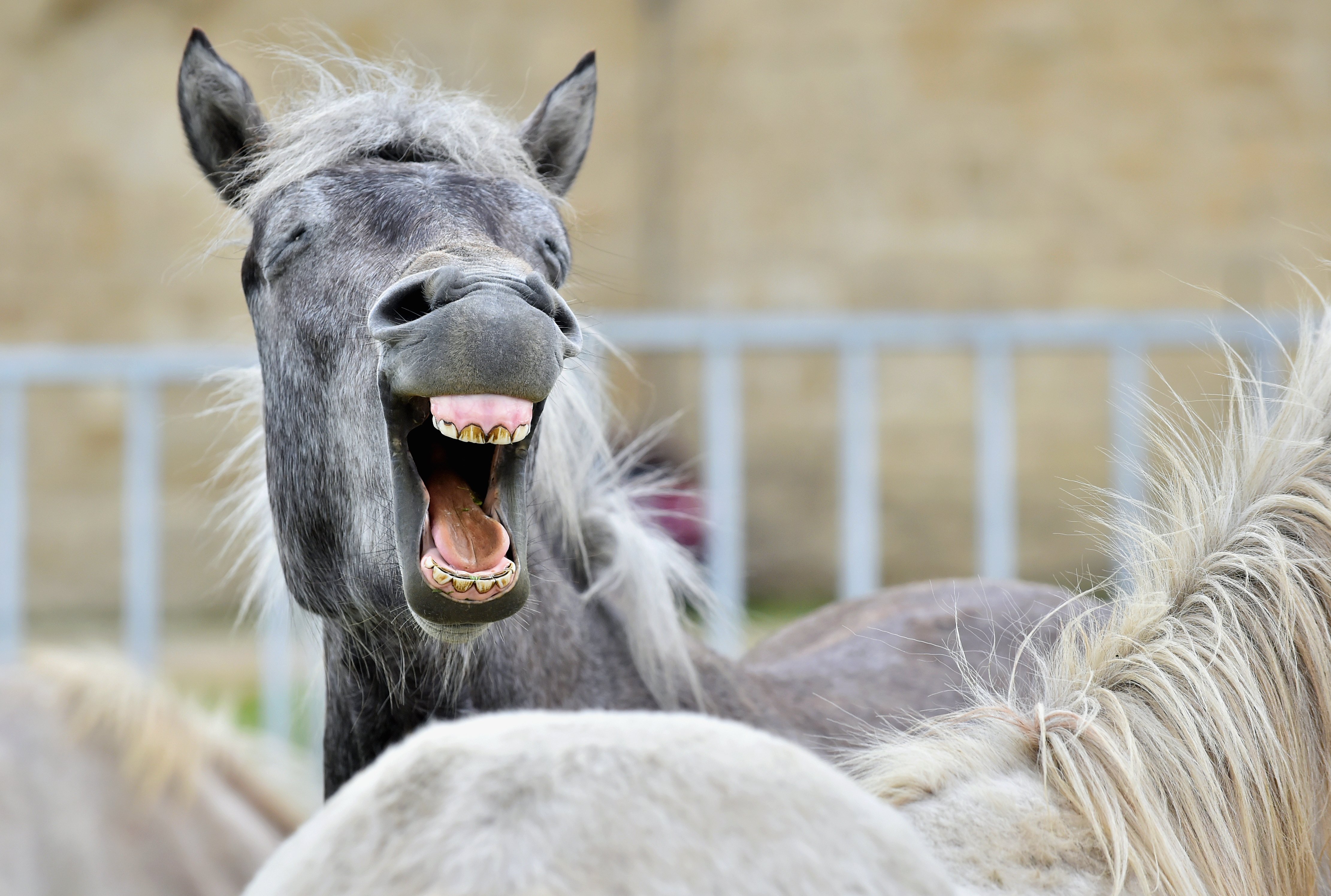
Most horse owners think that their horses lick objects because they have a mineral deficiency.
But this is also observed in horses with stomach ulcers.
The extent varies greatly from horse to horse, as do the objects, which are often metallic but can also include wood or concrete walls.
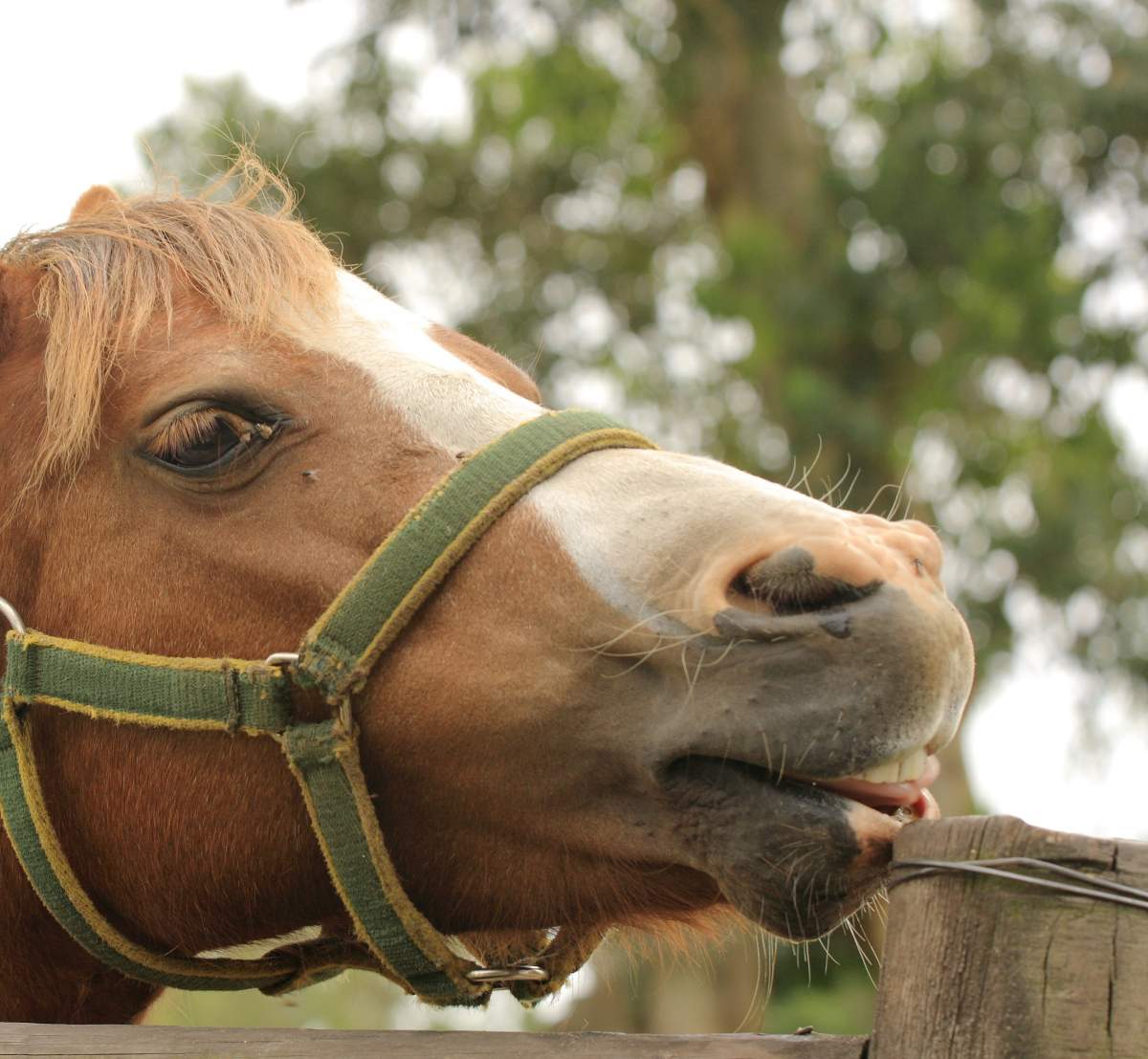
In acute cases, the horse may have an elevated pulse and a slight fever.
These symptoms are often accompanied by mild colic from the severe stomach pain.
In horses, a normal pulse is between 28 and 44 beats per minute and a normal temperature is between 37.5 and 38.2 degrees celsius.
If these are higher, a veterinarian should be consulted immediately to administer treatment.
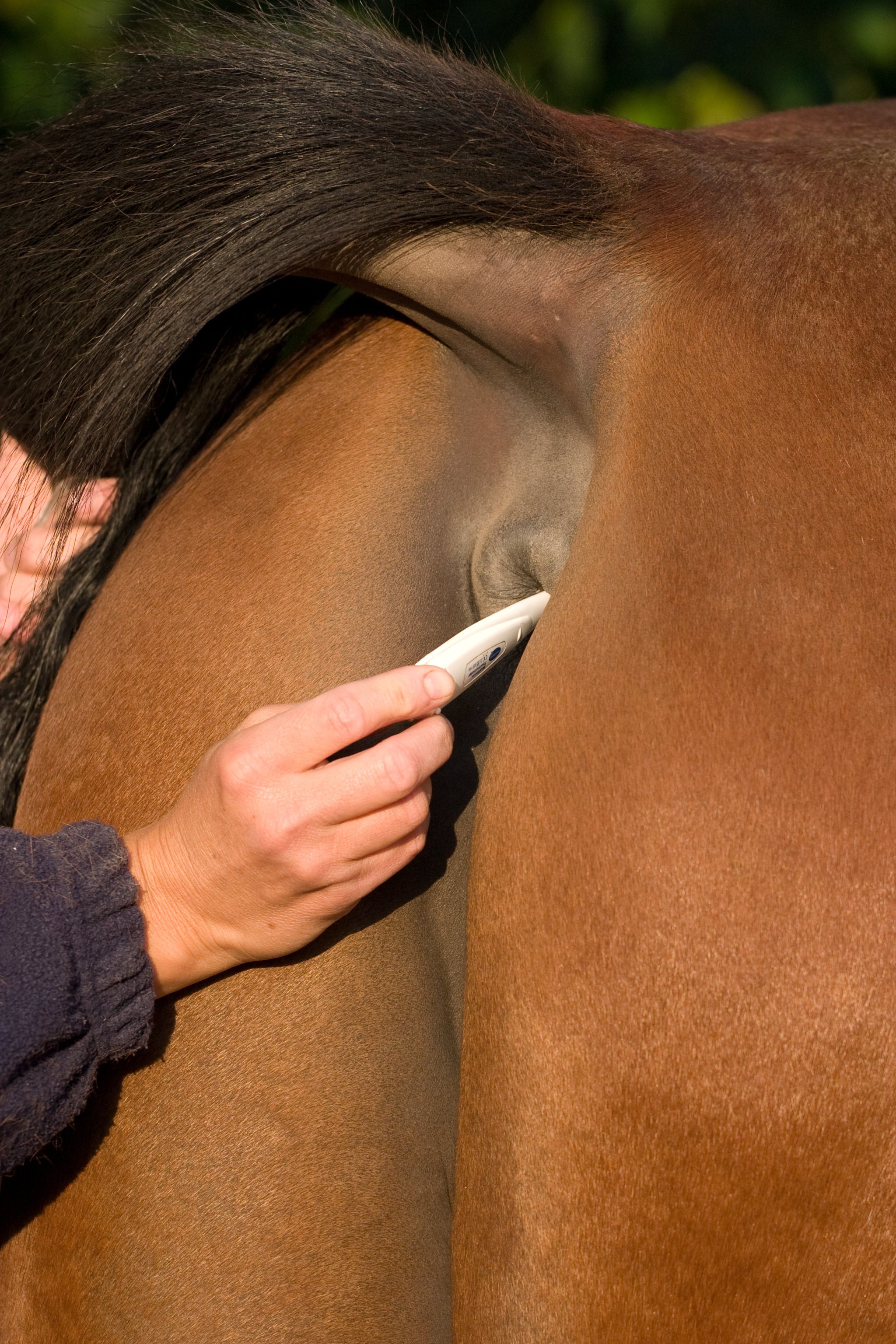
Mild colic episodes may occur after a horse eats concentrate feed and do not last long.
The horse tucks up his belly, possibly kicks in the direction of his belly and/or occasionally lies down and rolls on the ground.
These episodes usually disappear on their own after a short time.
Eating concentrate feed causes less bicarbonate-containing saliva to be formed per kilo than eating hay.
For example, gastric acid formed by eating concentrate feed is less sufficiently buffered than when the horse eats hay.
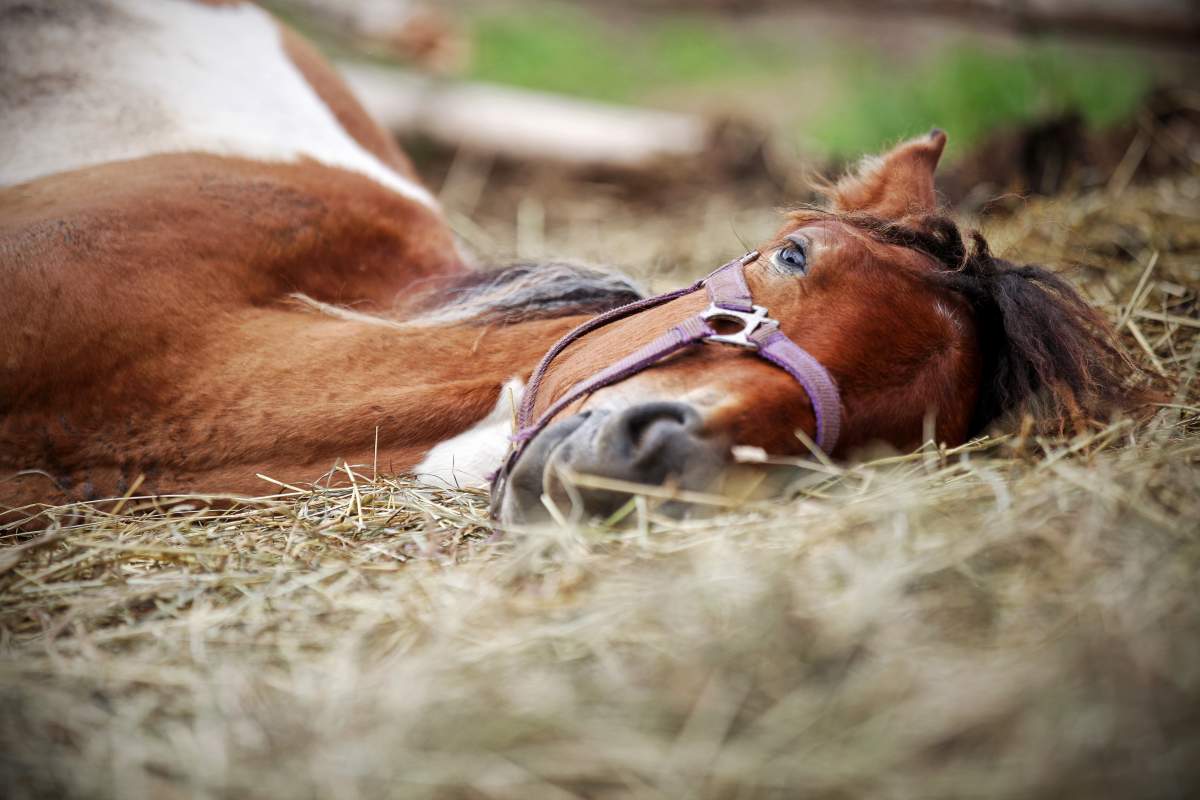
Saliva production increases as the horse’s organism tries to counteract the low pH value in the stomach.
The saliva has a basic pH value and buffers the gastric acid.
Horses may be observed to salivate even when they are neither eating nor chewing on something nor have a bit in their mouth.
Increased salivation will often occur after the horse eats concentrate feed.
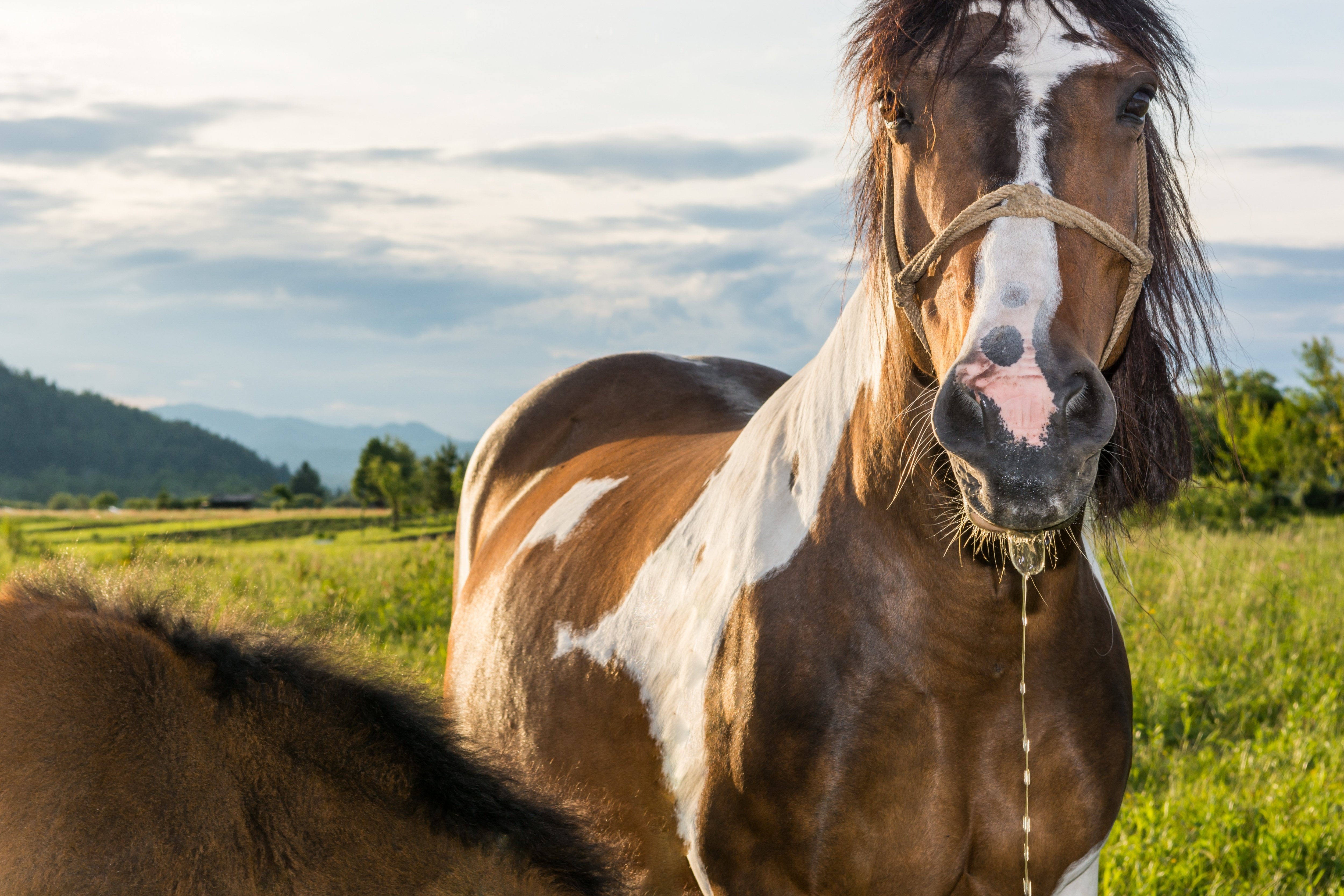
Stomach pain and reduced nutrient intake can lead to a drop in performance levels.
The horse does not have enough energy to be on top of its game.
The horse is dull and lethargic.
It doesn't like to trot and is unmotivated.
This symptom is exacerbated by acute pain.
Just like us humans, horses are not able to perform at their full potential when they suffer from pain and lack of energy.
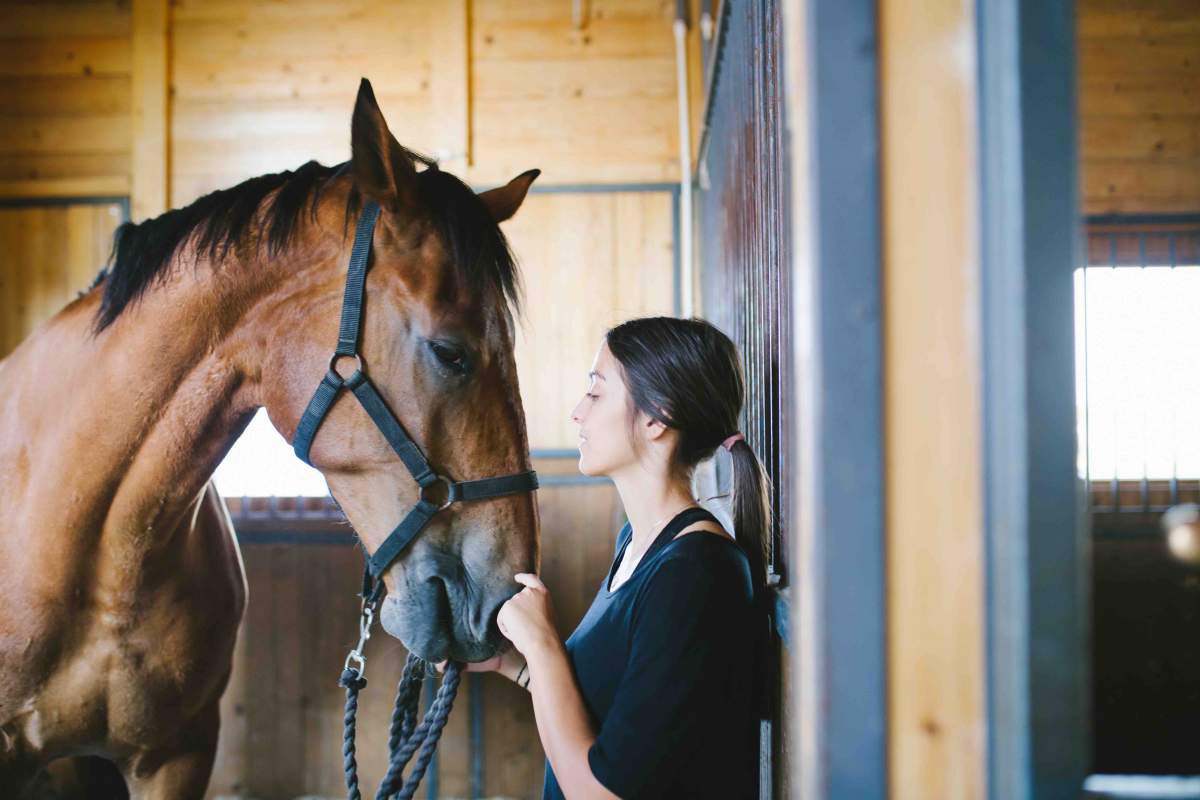
Many riders initially think that their horses are simply unwilling and don’t want to work.
The most common cause of unrideability is often bridle or back problems.
Stomach problems, however, shouldn’t be overlooked.
They can cause a horse to experience severe pain, especially when working under the saddle, and the horse will adopt a compensating posture when walking in an attempt to alleviate this pain, keeping its back rigid, moving with tightness, bucking, becoming listless and no longer willing to work.
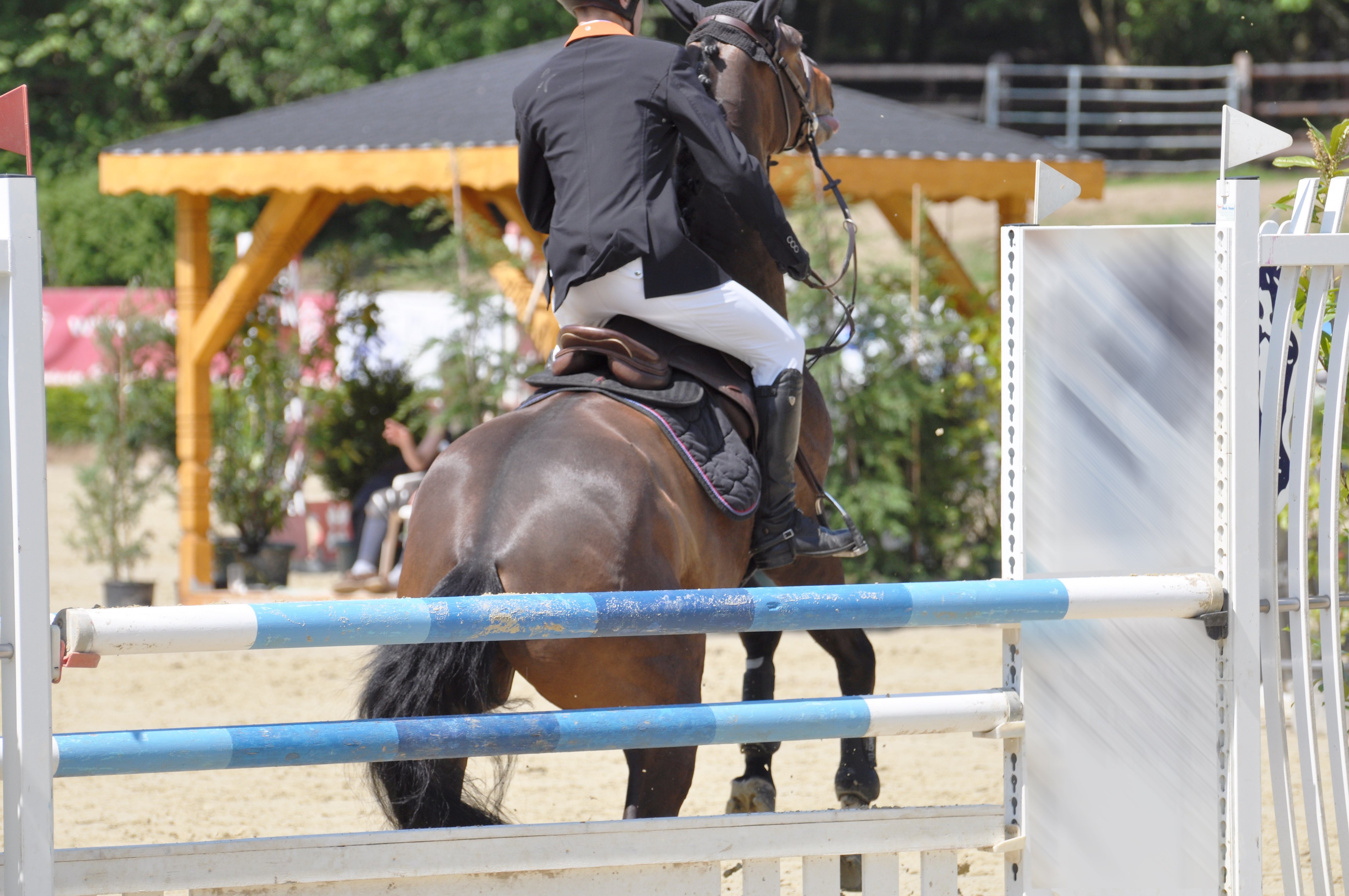
A loss of appetite is generally accompanied by weight loss.
The reduced intake of food means that the organism is no longer supplied with enough energy and nutrients, leading to reduced body mass.
Weight loss might first be noticed when the ribs suddenly are clearly visible. The same is true for the point of the hip as muscle tone is naturally lost.
A horse does not become emaciated overnight.
It would certainly be wrong to say that the other symptoms would be better to have, but when a horse gets to this point, it means that certain problems – including a stomach ulcer – have long been overlooked.
But it should never come to this!
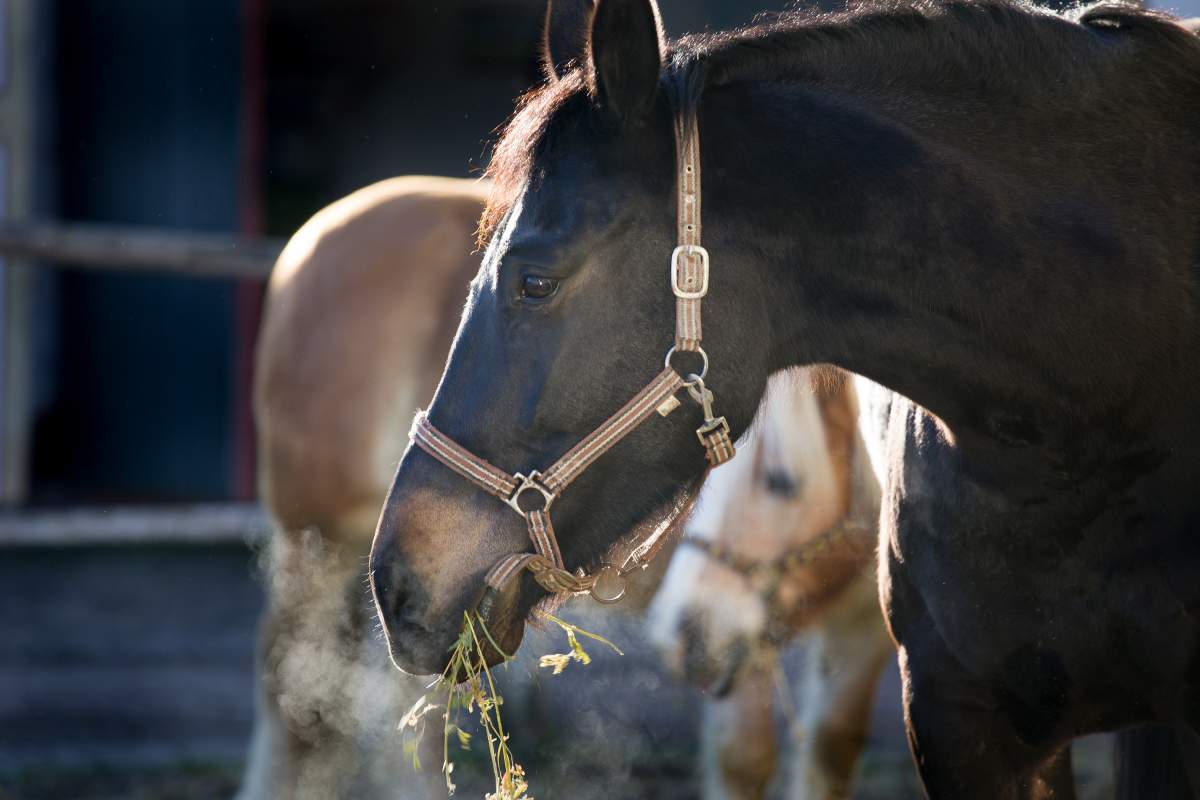
Not every horse suffering from gastric ulcers has a dull coat.
Some horses have shiny coats and appear healthy, despite having gastric ulcers.
In many cases gastric ulcers or their symptoms, such as loss of appetite or weight loss, will disturb the intestinal flora, so that the intestine can no longer absorb sufficient nutrients.
As a result, the metabolism no longer has enough nutrients available and the coat loses its shine, becoming dull and lacklustre.
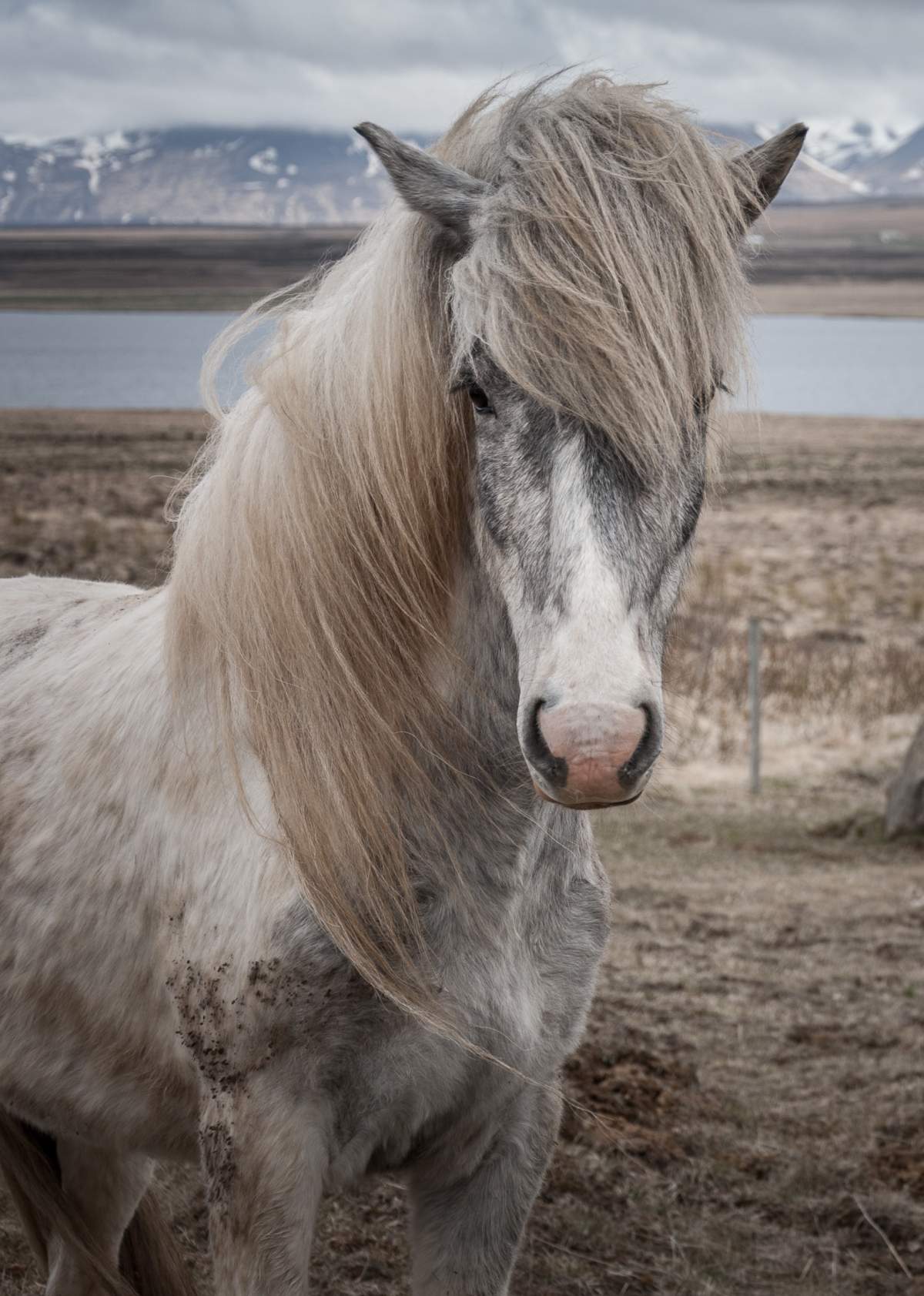
Equine 74 Gastric
Buffers the excess acid in the horse's stomach instead of blocking it.
Equine 74 Stomach Calm Relax
Supports the nervous horse stomach in stressful situations.